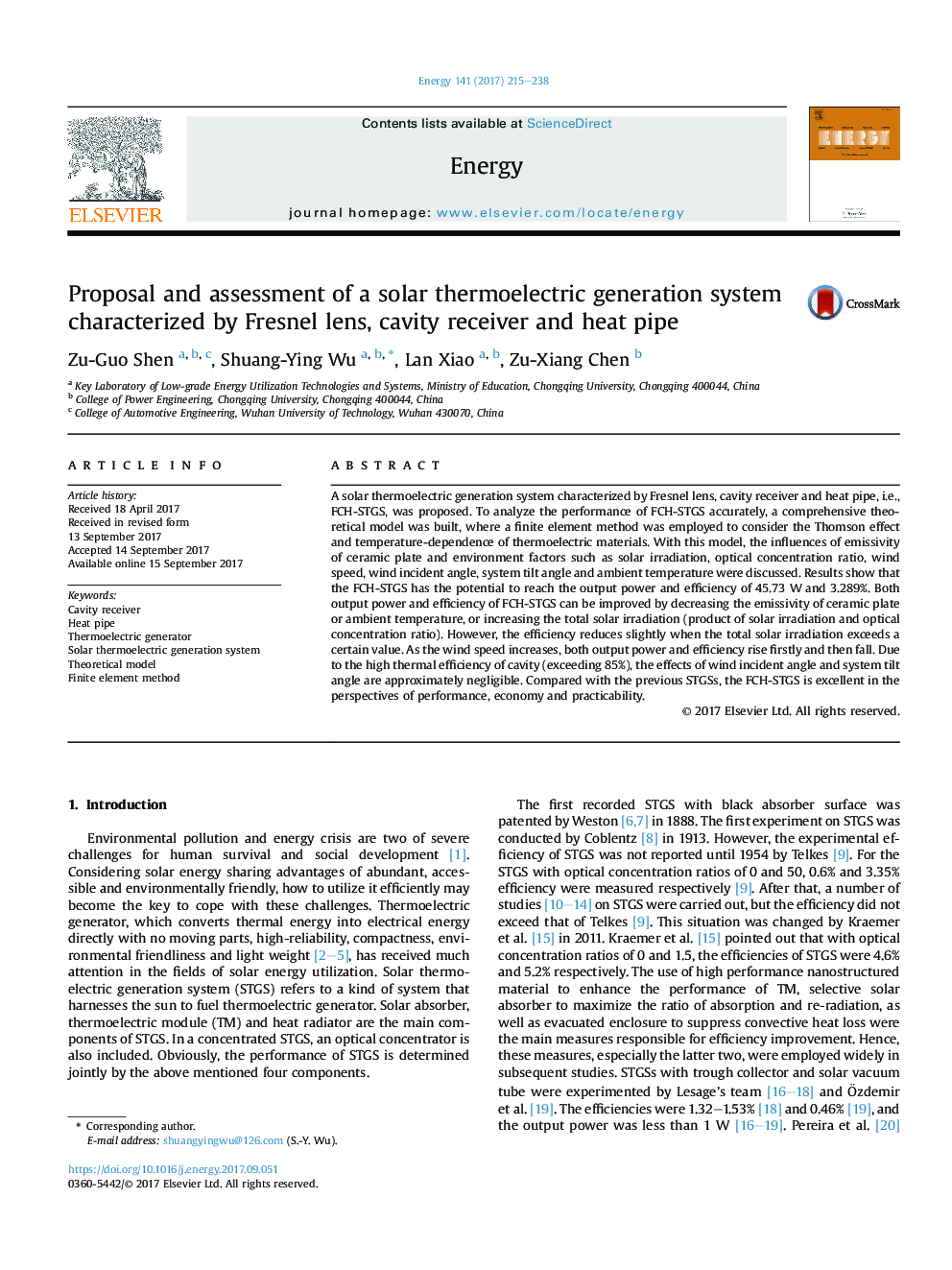| Article ID | Journal | Published Year | Pages | File Type |
|---|---|---|---|---|
| 5475387 | Energy | 2017 | 24 Pages |
Abstract
A solar thermoelectric generation system characterized by Fresnel lens, cavity receiver and heat pipe, i.e., FCH-STGS, was proposed. To analyze the performance of FCH-STGS accurately, a comprehensive theoretical model was built, where a finite element method was employed to consider the Thomson effect and temperature-dependence of thermoelectric materials. With this model, the influences of emissivity of ceramic plate and environment factors such as solar irradiation, optical concentration ratio, wind speed, wind incident angle, system tilt angle and ambient temperature were discussed. Results show that the FCH-STGS has the potential to reach the output power and efficiency of 45.73Â W and 3.289%. Both output power and efficiency of FCH-STGS can be improved by decreasing the emissivity of ceramic plate or ambient temperature, or increasing the total solar irradiation (product of solar irradiation and optical concentration ratio). However, the efficiency reduces slightly when the total solar irradiation exceeds a certain value. As the wind speed increases, both output power and efficiency rise firstly and then fall. Due to the high thermal efficiency of cavity (exceeding 85%), the effects of wind incident angle and system tilt angle are approximately negligible. Compared with the previous STGSs, the FCH-STGS is excellent in the perspectives of performance, economy and practicability.
Related Topics
Physical Sciences and Engineering
Energy
Energy (General)
Authors
Zu-Guo Shen, Shuang-Ying Wu, Lan Xiao, Zu-Xiang Chen,
